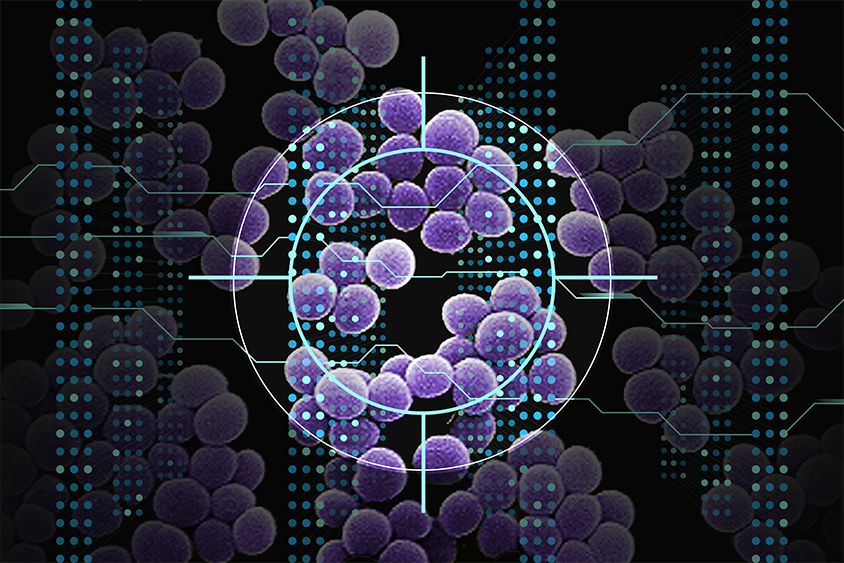New AI system designs proteins that successfully bind to target molecules, with potential for advancing drug design, disease understanding and more.

deepmind.google
AlphaProteo generates novel proteins for biology and health research
Research
Published: 5 September 2024
Authors: Protein Design and Wet Lab teams
[SUB]New AI system designs proteins that successfully bind to target molecules, with potential for advancing drug design, disease understanding and more.[/SUB]
Every biological process in the body, from cell growth to immune responses, depends on interactions between molecules called proteins. Like a key to a lock, one protein can bind to another, helping regulate critical cellular processes. Protein structure prediction tools like
https://deepmind.google/impact/meet-the-scientists-using-alphafold/"]AlphaFold have already given us tremendous insight into how proteins interact with each other to perform their functions, but these tools cannot create new proteins to directly manipulate those interactions.
Scientists, however, can create novel proteins that successfully bind to target molecules. These binders can help researchers accelerate progress across a broad spectrum of research, including drug development, cell and tissue imaging, disease understanding and diagnosis – even crop resistance to pests. While
https://www.nature.com/articles/s41586-023-06415-8"]recent machine learning approaches to protein design have made great strides, the process is still laborious and requires extensive experimental testing.
Today, we introduce
https://storage.googleapis.com/deep...tein_Design_White_Paper_2024.pdf"]AlphaProteo, our first AI system for designing novel, high-strength protein binders to serve as building blocks for biological and health research. This technology has the potential to accelerate our understanding of biological processes and aid the discovery of new drugs, the development of biosensors and more.
AlphaProteo can generate new protein binders for diverse target proteins, including
https://www1.rcsb.org/structure/1BJ1"]VEGF-A, which is associated with cancer and complications from diabetes. This is the first time an AI tool has been able to design a successful protein binder for VEGF-A.
AlphaProteo also achieves higher experimental success rates and 3 to 300 times better binding affinities than the best existing methods on seven target proteins we tested.
Learning the intricate ways proteins bind to each other
Protein binders that can bind tightly to a target protein are hard to design. Traditional methods are time intensive, requiring multiple rounds of extensive lab work. After the binders are created, they undergo additional experimental rounds to optimize binding affinity so they bind tightly enough to be useful.
Trained on vast amounts of protein data from the
https://www.rcsb.org/"]Protein Data Bank (PDB) and more than 100 million predicted structures from AlphaFold, AlphaProteo has learned the myriad ways molecules bind to each other. Given the structure of a target molecule and a set of preferred binding locations on that molecule, AlphaProteo generates a candidate protein that binds to the target at those locations.
https://deepmind.google/api/blob/website/media/GDM-ProteinDesignBlog-02-Binder-Final.mp4
[FIGURE]
[CAPTION]Illustration of a predicted protein binder structure interacting with a target protein. Shown in blue is a predicted protein binder structure generated by AlphaProteo, designed for binding to a target protein. Shown in yellow is the target protein, specifically the SARS-CoV-2 spike receptor-binding domain[/CAPTION]
[/FIGURE]
Demonstrating success on important protein binding targets
To test AlphaProteo, we designed binders for diverse target proteins, including two viral proteins involved in infection (
https://www.rcsb.org/structure/2WH6"]BHRF1 and
SARS-CoV-2 spike protein receptor-binding domain), SC2RBD), and five proteins involved in cancer, inflammation and autoimmune diseases (
IL-7Rɑ,
PD-L1,
TrkA,
IL-17A and
VEGF-A).
Our system has highly-competitive binding success rates and best-in-class binding strengths. For seven targets, AlphaProteo generated candidate proteins in-silico that bound strongly to their intended proteins when tested experimentally.
For one particular target, the viral protein
https://www.rcsb.org/structure/2WH6"]BHRF1, 88% of our candidate molecules bound successfully when tested in the
Google DeepMind Wet Lab. Based on the targets tested, AlphaProteo binders also bind 10 times more strongly, on average, than the best existing design methods.
For another target,
https://www.rcsb.org/structure/1WWW"]TrkA, our binders are even stronger than the best prior designed binders to this target that have been through multiple rounds of experimental optimization.
[FIGURE]
[CAPTION]A grid of illustrations of predicted structures of seven target proteins for which AlphaProteo generated successful binders. Shown in blue are examples of binders tested in the wet lab; shown in yellow are protein targets; highlighted in dark yellow are intended binding regions.[/CAPTION]
[/FIGURE]
Validating our results
Beyond in silico validation and testing AlphaProteo in our wet lab, we engaged Peter Cherepanov’s, Katie Bentley’s and David LV Bauer’s research groups from the Francis Crick Institute to validate our protein binders. Across different experiments, they dived deeper into some of our stronger SC2RBD and VEGF-A binders. The research groups confirmed that the binding interactions of these binders were indeed similar to what AlphaProteo had predicted. Additionally, the groups confirmed that the binders have useful biological function. For example, some of our SC2RBD binders were shown to prevent SARS-CoV-2 and some of its variants from infecting cells.
AlphaProteo’s performance indicates that it could drastically reduce the time needed for initial experiments involving protein binders for a broad range of applications. However, we know that our AI system has limitations as it was unable to design successful binders against an eighth target (
https://www.rcsb.org/structure/1TNF"]TNFɑ), a protein associated with autoimmune diseases like rheumatoid arthritis.
Achieving strong binding is usually only the first step in designing proteins that might be useful for practical applications; there are many more bioengineering obstacles to overcome in the research and development process.
Towards responsible development of protein design
Protein design is a fast-evolving technology that holds lots of potential for advancing science in everything from understanding factors causing disease to accelerating diagnostic test development for virus outbreaks, supporting more sustainable manufacturing processes and even cleaning contaminants from environments.
To account for potential risks in biosecurity, building on our long-standing approach to responsibility and safety,
https://storage.googleapis.com/deep..."]we’re working with leading external experts to inform our phased approach to sharing this work and feeding into community efforts to develop best practices including NTI’s new AI Bio Forum.
Going forward, we’ll be working with the scientific community to leverage AlphaProteo on impactful biology problems and understand its limitations. We've also been exploring its drug design applications at Isomorphic Labs and are excited about what the future holds.
At the same time, we’re continuing to improve success rates and affinity of AlphaProteo’s algorithms while expanding its range of design problems it can tackle. We're working with researchers in machine learning, structural biology, biochemistry and other disciplines towards developing a responsible comprehensive protein design offering for the community.
Read our whitepaper here




